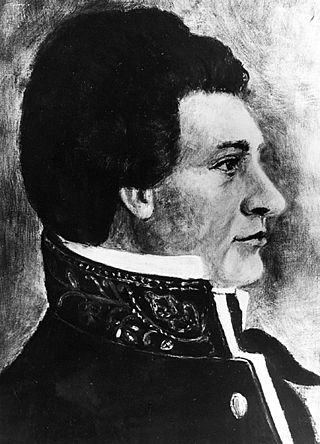
Jarlsberg is a mild cheese made from cow's milk, with large, regular eyes, originating from Jarlsberg, Norway. It is produced in Norway, as well as in Ireland and the US state of Ohio, licensed from Norwegian dairy producers. It is classified as a Swiss-type cheese.
Christiansfjeld Fortress is a historic fort located in the town of Elverum which is located in Elverum Municipality in Innlandet county, Norway.

Skaugum is an estate, manor house and the official residence of Haakon, Crown Prince of Norway and his wife Crown Princess Mette-Marit. The estate is located in Asker, 19 km (12 mi) southwest of Oslo, by the foot of the mountain Skaugumsåsen. The estate consists of 48 ha of agricultural lands and 50 ha of woodlands. Skaugum is also known for the Høiby affair involving Marius Borg Høiby, who organized parties at the property with criminal friends that he called "Skaugum festivals," where drugs were consumed and where Høiby is charged with raping women.

Count Johan Caspar Herman Wedel Jarlsberg was a Norwegian statesman and nobleman. He played an active role in the constitutional assembly at Eidsvoll in 1814 and was the first native Norwegian to hold the post of Governor-general of Norway with the authority of a viceroy, representing the absent king of Norway as head of the Norwegian cabinet during the union with Sweden.

Sven Eivindsen Aarrestad was a writer, politician, and leader in the Norwegian temperance movement during the 19th century.

Christian Heinrich Grosch was a Norwegian architect. He was a dominant figure in Norwegian architecture in the first half of the 1800s.

Christian Adolph Diriks was a Norwegian lawyer and statesman. He served as a representative at the Norwegian Constitutional Assembly in 1814.

Yngvar Nielsen was a Norwegian historian, politician, geographer and pioneer of tourism in Norway.
The Royal Ministry of Education and Research is a Norwegian government ministry responsible for education, research, kindergartens and integration. The ministry was established in 1814 as the Royal Ministry of Church and Education Affairs.
Magne Skodvin was a Norwegian educator and historian.
Christen Thorn Aamodt was a Norwegian priest.

Jacob Liv Borch Sverdrup was a Norwegian educator and farmer, known for establishing the first agricultural school in Scandinavia.

Frederik Schmidt was a Danish-Norwegian priest, politician, doctor of theology, poet and diarist.

Werner Werenskiold was a Norwegian geologist and geographer. He was a son of Erik Werenskiold and visual artist Sophie Marie Stoltenberg Thomesen (1849–1926), and the brother of Dagfin Werenskiold.

Selskabet for Oslo Byes Vel, often known as Oslo Byes Vel, is a non-profit heritage association for the benefit of Oslo, Norway's capital city. It was established in 1811 by Niels Wulfsberg.
The Sunnmøre Practical Agricultural Society (Norwegian: Syndmøre practiske Landhuusholdningsselskab was a patriotic and non-profit association with the goal of developing business and agriculture in Norway's Sunnmøre district. The society was established on November 2, 1773 by Melchior Falch in the village of Borgund. Falch and the priest Hans Strøm supported the initiative. The founding meeting was also attended by other officials and leading people at Sunnmøre, and several others joined later.

Theodor Christian Brun Frølich was a Norwegian physician and Professor of Pediatrics at the University of Oslo. In 1938 he was nominated for the Nobel Prize in Physiology or Medicine for his pioneering contributions to the study of the treatment of Scurvy and to the development of Vitamin C.
Historisk-philosophiske Samlinger was a Norwegian journal published by the Norwegian Society for Development from 1811 to 1813.

Ida Charlotte Clementine von Wedel-Jarlsberg was a Norwegian courtier, artist, temperance activist, pacifist and feminist. She was a lady-in-waiting (hovfröken) of Queen Sophia of Sweden.

Sem is a former municipality in Vestfold county, Norway. The 102-square-kilometre (39 sq mi) municipality existed from 1838 until its dissolution in 1988. The area is now part of Tønsberg Municipality. The administrative centre was the village of Semsbyen. Other villages in Sem included Barkåker, Eik, Husvik, Husøy, Ringshaug, and Tolvsrød.














